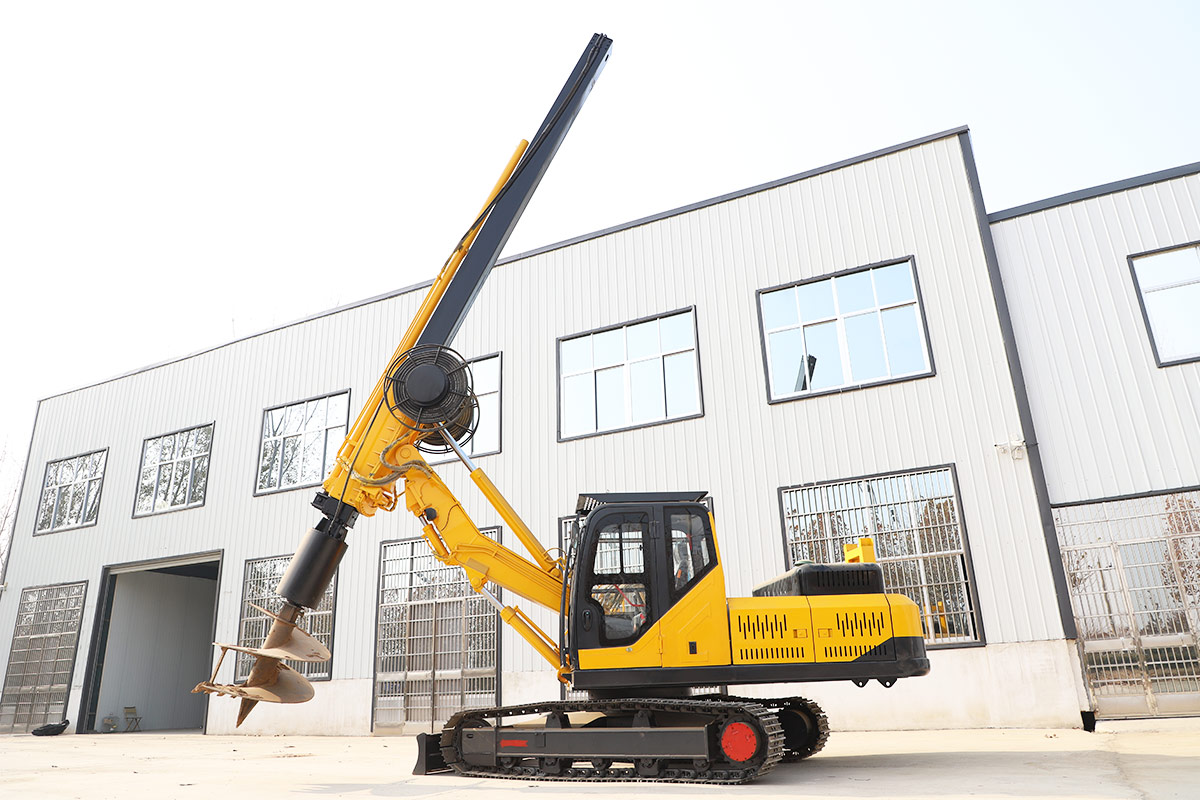Date: Aug 21, 2022 Views:
As we all know, the pile driver is a kind of equipment that is used more in construction machinery. Proper operation technology will have certain effect on the operation of the pile driver. This article will tell you about some specific operation techniques of the pile driver.

1. Hole forming process:
(1) The drilling machine is in place → drilling → checking the quality → cleaning the bottom of the hole → hole cover → moving the drilling machine
(2) The process of pouring concrete:
Measure the hole depth and verticality of the cover plate → place the reinforcement cage → place the concrete slide hole → pour the concrete (as the pouring and vibration) → insert the top reinforcement of the pile
2. The drilling machine is in place: when the drilling machine is in place, it must be kept stable without tilting and displacement. Observe and record.
3. Drilling: straighten the tappet of the frame, align the pile position (use the alignment ring), start the machine to drill in and unearth, and stop drilling and lift the drilling after reaching the control depth.
4. Check the hole quality:
(1) Determination of drilling depth. Use sounding rope (hammer) or lantern to measure hole depth and virtual soil thickness. The thickness of the virtual soil is equal to the difference of the drilling depth. The thickness of virtual soil should generally not exceed 10cm.
(2) Aperture control. When drilling into a soil layer with many stones or a soft plastic clay layer with a large water content, it is necessary to prevent the drill pipe from shaking and causing the hole diameter to expand, causing the hole wall to adhere to disturbed soil and the bottom of the hole to increase and fall back soil.
5. Hole subsoil cleaning. After drilling to the predetermined depth, it must be idling at the bottom of the hole to clear the soil, and then stop the rotation; lift the drill pipe, and do not twist the drill pipe. When the thickness of the virtual soil at the bottom of the hole exceeds the quality standard, it is necessary to analyze the reasons and take measures to deal with it. The soil scattered on the ground during the drilling process must be removed at any time.
6. Move the drilling rig to the next pile position. After the hole-forming inspection, the pile hole construction record should be filled. Then cover the orifice cover, and prevent driving or walking on the cover. Finally, remove the drilling rig to the next pile position.
7. Pour the concrete:
(1) Remove the drilling cover, and recheck the hole depth, diameter, hole wall, verticality and the thickness of the virtual soil at the bottom of the hole. If there is any non-compliance with the quality standard requirements, it should be processed and qualified before proceeding to the next process.
(2) Hoisting the rebar cage: The mortar pad (or plastic card) should be tied before the rebar cage is placed; when hoisting the rebar cage, it should be aligned with the hole position, hoisted upright and stabilized, and lowered slowly to avoid collision with the hole wall . When the steel cage is placed in the design position, it should be fixed immediately. When two sections of reinforcement cages are connected, welding should be adopted to ensure the correct position of the reinforcement and ensure that the layer thickness meets the requirements.
(3) Concrete is poured by releasing the chute. The thickness of the virtual soil in the borehole should be checked and measured again before releasing the chute. When pouring concrete, it should be carried out continuously, and the layers should be vibrated and compacted. Generally, it should not be larger than 1.5m.
(4) When the concrete is poured to the top of the pile, the design elevation of the top of the pile should be appropriately exceeded to ensure that the elevation of the top of the pile meets the design requirements after the laitance is removed.
(5) Inserting steel bars into the evacuation cylinder and the top of the pile. When the concrete is poured to 1.5m from the top of the pile, the chute can be pulled out and the concrete can be poured directly. The steel bar on the top of the pile must be inserted vertically, with sufficient protective layer and anchoring length to prevent deviation and oblique insertion.
(6) The slump of concrete should generally be 8-10cm; in order to ensure its workability and slump, attention should be paid to adjusting the sand rate and adding water reducer, fly ash, etc.
(7) The test blocks of the same mixing ratio shall not be less than one group per class.
8. Construction in winter and rainy seasons:
(1) In winter, when the temperature is below 0°C when pouring concrete, heating and heat preservation measures should be taken. When pouring, the temperature of the concrete shall be carried out according to the provisions of the winter application plan. The pile top shall not be frozen before reaching 50% of the design strength. When the temperature is higher than 30 ℃, the concrete should be slowed according to the specific situation.
(2) Strictly adhere to the regulations of pouring concrete while drilling during the rainy season, so as to prevent the hole from collapsing due to flooding after the hole is formed in the rain. Drilling is not allowed on rainy days. There must be various measures for drainage at the site to prevent the ground water from flowing into the tank, so as to avoid slope collapse or subsidence of foundation soil and inclination of drilling machine.